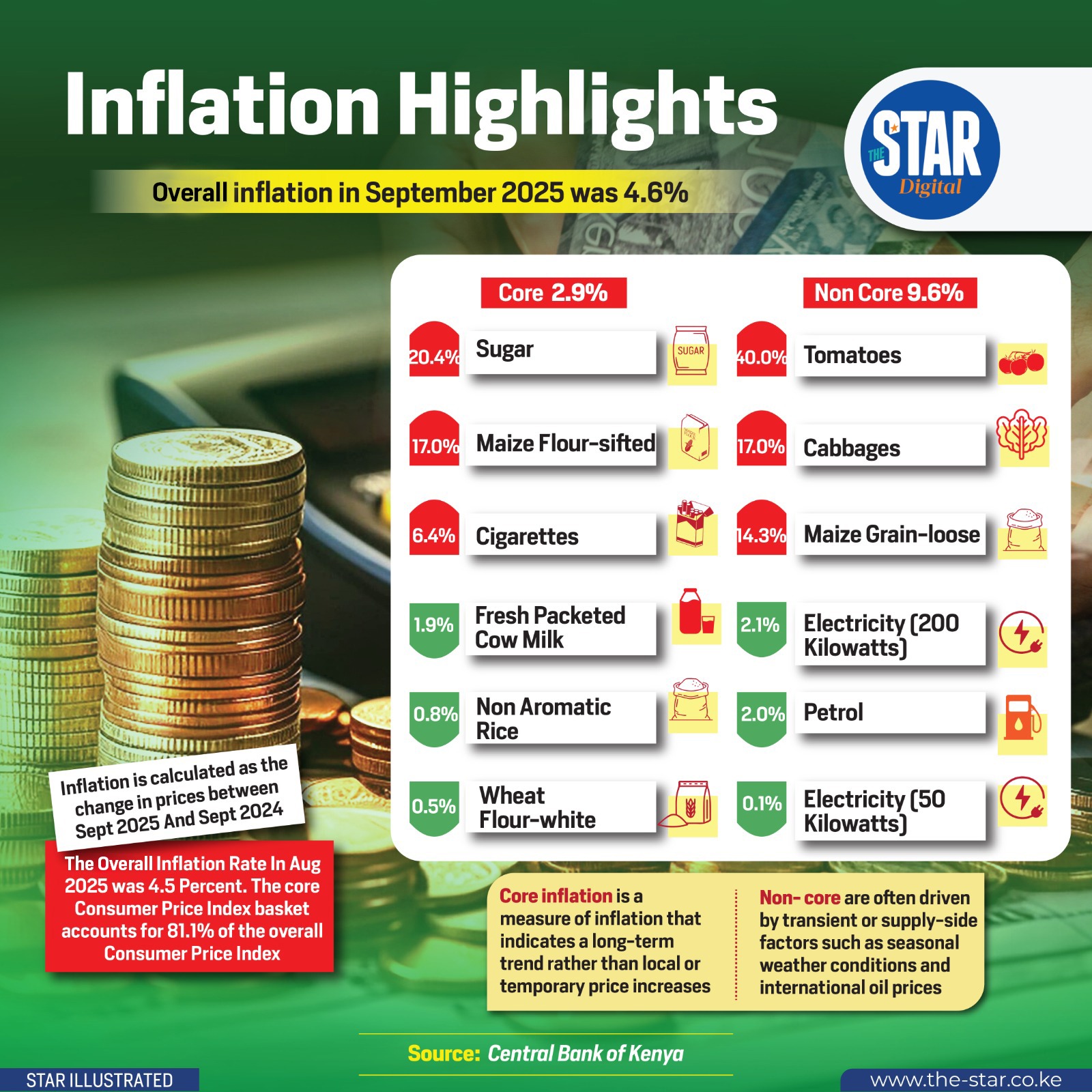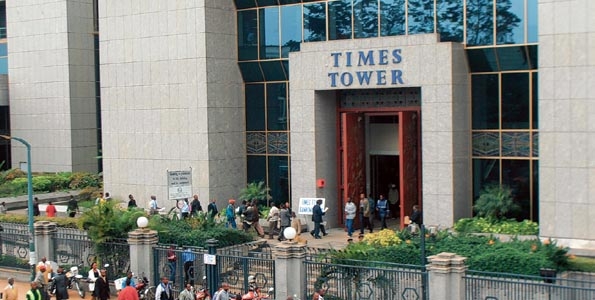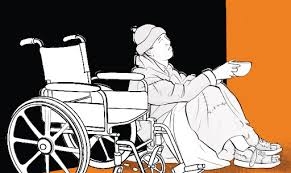

Kenya’s overall inflation rose to 4.6 per cent in September 2025, slightly up from 4.5 per cent recorded in August, according to data from the Central Bank of Kenya.
The rise reflects changes in prices across both core and non-core goods and services.
Core inflation, which indicates long-term trends rather than temporary spikes, stood at 2.9 per cent. Items contributing to core inflation included sugar (20.4%), sifted maize flour (17%), and cigarettes (6.4%).
On the other hand, essentials such as fresh cow milk (1.9%), non-aromatic rice (0.8%), and white wheat flour (0.5%) showed modest increases.
Non-core inflation, which is often influenced by seasonal factors and supply-side pressures, recorded a higher 9.6 per cent.
Key contributors were tomatoes, which surged 40 per cent, loose maize grain (14.3%), and cabbages (17%).
Energy costs also influenced non-core inflation, with electricity for 200 kilowatts rising 2.1 per cent and petrol up 2 per cent.
The Central Bank notes that core goods account for 81.1 per cent of the overall Consumer Price Index basket.
Core inflation reflects structural, long-term price movements, while non-core prices can fluctuate due to temporary supply constraints or international market factors.
Analysts say households should prepare for continued variability in staple food prices, particularly fresh produce, as seasonal changes and import dynamics continue to affect costs.

















